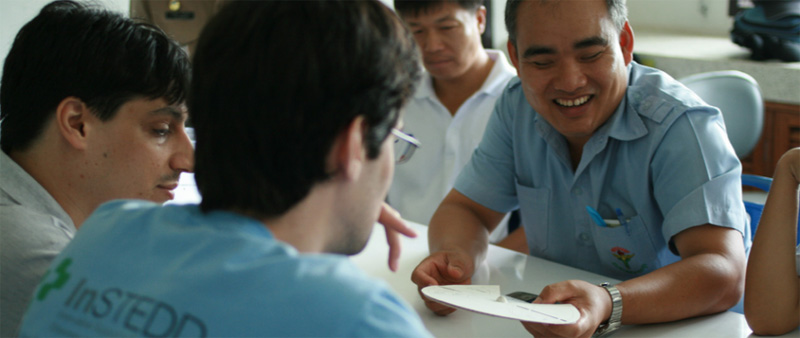
Survivors in Haiti queue for water after the 2010 earthquake.
The Problem
It’s a familiar scene. Following the onset of a major disease outbreak or natural disaster, government agencies, non-governmental organizations and the local community must join forces and act quickly to alleviate suffering. Those charged with mounting a response need to communicate, assemble teams, share information, make plans and coordinate their efforts.
Yet despite everyone’s best intentions, a wealth of resources, deep expertise and tremendous effort, there are still challenges in trying to organize an effective response. Too often, the response proves confused, inefficient, and far less effective than it should have been. As a population waits for help, delays mount, resources are wasted, and too little arrives too late.
The Collaboration Gap
Effective collaboration requires the establishment of a reliable flow of timely, accurate and complete information. Yet the information technologies required often fail in the difficult environments where humanitarian organizations work. Today’s public health and disaster response workers need to have information at their fingertips, including satellite imagery, sensor data, media reports and all of the rich resources of the web. Responders to a crisis can benefit greatly from powerful information technology tools and services to help them make the right decisions. They need to be able to communicate reliably with headquarters, with community leaders, and with one another at any moment. At InSTEDD our goal is to help our partners meet these challenges.
Our Strategy
We work with governments, universities, corporations, international health organizations, NGOs and local communities around the world. We go to the field — in rural Asia, urban Africa, the rain forests of Indonesia, and the slums of Haiti — to learn about the challenges that  professionals face in those places. Where solutions already exist, we integrate them. If another technology can be adapted to meet the needs we find, we re-purpose it. If a genuine gap is found where no solution exists and no market pressures are driving the necessary innovation, we build it ourselves. Then we give it away, free and open source.
professionals face in those places. Where solutions already exist, we integrate them. If another technology can be adapted to meet the needs we find, we re-purpose it. If a genuine gap is found where no solution exists and no market pressures are driving the necessary innovation, we build it ourselves. Then we give it away, free and open source.
We support humanitarian organizations, local communities, and government ministries by filling the collaboration gaps we find through sustainable innovation — a unique and effective combination of user-centered design, software development, and on-the-job training.
Our work is guided by these basic principles:
Agile Development
We work closely with end-users and stakeholders, creating and adapting software to address the most pressing needs from the field. As part of the design and prototype process, we are in constant dialogue with our users; doing extensive usability exercises and giving our users a prominent role in the evolution of the software systems. As a result, appropriate designs that empower the end-users appear faster, as do new and productive uses for the applications.
Local Capacity Building
By listening to our users and incorporating their input throughout the full cycle of software development, we ensure the cultural appropriateness and the sustainability of our products. Our local partners participate in the full life cycle of new system design — rapid prototyping, design, development, quality assurance and field support in the local language, culture and context — thus creating a long-term asset for the country. In addition, through our regional iLabs and the sponsorship of local BarCamps, DevCamps and other open events, we share our products and what we’ve learned with the whole community of local engineers and developers.
Open Architecture, Open Source
Our systems conform to a set of architectural principles that allow them to be used either as-is or as building blocks for larger solutions. All of our tools meet or exceed the relevant standards for their domain and allow the sharing of data with other systems in a reliable and secure way. Basing the tools on open standards and exposing appropriate APIs also allows them to be used locally and by other organizations in innovative ways as a platform for new social and humanitarian programs.
View: Presentations | Photo Essays | Photo Albums

